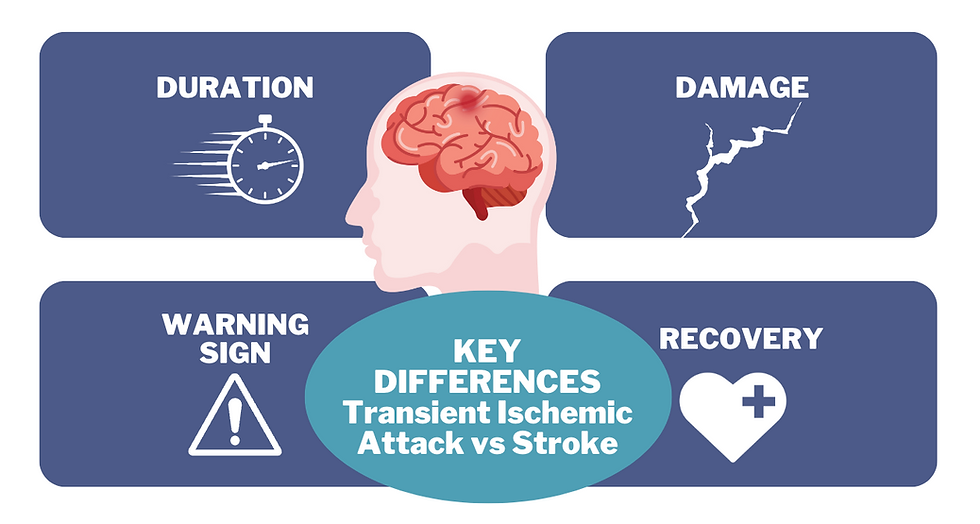Transient Ischemic Attack vs Stroke - Is it the same?
- Lenis Phoa
- Dec 5, 2023
- 2 min read
TIA is like a temporary "mini-stroke" that doesn't cause lasting damage, while a stroke is a more severe event that can result in permanent damage.

Here are a few key points to understand the difference:
1. Duration: A TIA is a brief episode that lasts for a short period, typically a few minutes to a few hours. On the other hand, a stroke is a longer-lasting event, with symptoms that persist for more extended periods, often permanently if not treated promptly.
2. Damage: During a TIA, the blood flow to a part of the brain is temporarily disrupted, leading to temporary symptoms. This disruption doesn't cause lasting damage to brain tissue. In contrast, during a stroke, the blood flow is severely blocked or interrupted, resulting in a lack of oxygen and nutrients to the brain. This can lead to permanent damage to brain cells.
3. Warning sign: A TIA can be considered as a warning sign or a "mini-stroke" because it indicates an increased risk of having a full-blown stroke in the future. It serves as an opportunity to recognize and address underlying health issues that may contribute to stroke risk, such as high blood pressure or irregular heart rhythm. A stroke, on the other hand, is a more severe event that requires immediate medical attention to minimise long-term damage.
4. Recovery: Since a TIA doesn't cause lasting damage, the symptoms usually resolve on their own, and the person can return to their normal functioning relatively quickly. With a stroke, the recovery process can be more prolonged and require extensive rehabilitation to regain lost abilities.
It's crucial to take both TIAs and strokes seriously and seek medical attention immediately. If you experience any sudden or concerning symptoms, even if they seem to go away quickly, it's essential to consult a healthcare professional to determine the cause and appropriate treatment. Identifying and managing stroke risk factors can help prevent future strokes, even after experiencing a TIA.
Physiotherapy plays a vital role in helping survivors of TIA and stroke regain their mobility, strength, and independence. It involves various techniques and exercises tailored to meet each individual's specific needs.If you know someone in need of rehabilitation post-stroke, drop us an email today.
For more information on stroke and rehabilitation, check out our resource on neurological rehabilitation here.

Comments